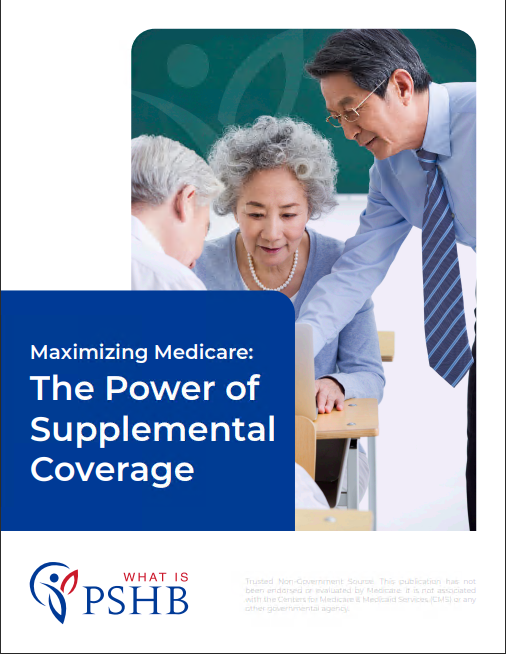Key Takeaways
-
In 2025, the federal government is contributing roughly 70% of the total premium cost for most Postal Service Health Benefits (PSHB) plans.
-
Understanding how these contributions work can help you make more informed choices about your healthcare coverage, especially when budgeting for retirement or planning ahead.
Understanding the Basics of PSHB Premium Contributions
When you’re enrolled in the Postal Service Health Benefits (PSHB) Program, the cost of your health insurance premium is split between you and the federal government. The government’s share typically covers a significant portion of the premium, but the exact amount depends on your plan choice, your enrollment type (Self Only, Self Plus One, or Self and Family), and whether you’re an active employee or a retiree.
In 2025, the PSHB Program has fully replaced FEHB for Postal Service employees and retirees. That shift means the government contribution toward your premium is now determined by the same cost-sharing formula used under the FEHB program—but applied solely within the PSHB system.
How the 70% Government Contribution Works
The government generally pays about 70% of the total premium cost, with you covering the remaining 30%. However, there are upper limits to what the government will contribute, based on a weighted average of all plan premiums available under PSHB. This is known as the government contribution cap.
Here’s what this means for you:
-
The 70% figure isn’t absolute. If you choose a higher-cost plan, you may pay more than 30% of the premium.
-
If you choose a lower-cost plan, your share might be less than 30%, but the government never pays more than the maximum contribution cap.
What This Looks Like for Different Enrollment Types
The government’s share of your premium also varies based on the type of coverage you select. Here’s how contributions break down in 2025:
-
Self Only: The government covers approximately 70% of the total monthly premium.
-
Self Plus One: The contribution amount increases because it covers two individuals.
-
Self and Family: This is the highest coverage tier and the government pays 70% of the premium, up to the cap, for family coverage.
Remember, you are responsible for the remainder of the premium, and this is deducted from your paycheck (if you’re an employee) or your annuity (if you’re retired).
Differences Between Employees and Retirees
If you’re an active Postal Service employee, the government contribution is based on your employment status and continues as long as you’re employed.
As a retiree, the government still pays its share of your PSHB premium. However, your out-of-pocket costs may be higher than those of active employees for several reasons:
-
Medicare coordination: If you’re enrolled in Medicare Part B, some PSHB plans offer reduced premiums or cost-sharing.
-
No pre-tax payment option: Employees can pay their premiums with pre-tax dollars, but retirees generally cannot, unless enrolled in specific tax-advantaged arrangements.
In 2025, many retirees see slightly higher monthly premiums than they did in 2024 due to average increases in healthcare costs.
Understanding the Weighted Average Cap
The government’s contribution is limited by the average premium of all available plans, weighted by enrollment. This means:
-
Plans with higher enrollment impact the cap more.
-
If the plan you choose is more expensive than the average, you pay the difference above the capped contribution.
-
If your plan costs less than the average, you may pay less out of pocket.
This system encourages plan competition and aims to keep overall government spending within limits.
How the Cap Affects Your Premium
Let’s say the weighted average monthly premium in 2025 is $1,800 for Self and Family coverage. The government will contribute up to 72% of that average, which comes out to $1,296. If your chosen plan costs more than $1,800 per month, you’re responsible for anything above the $1,296 cap.
This cap keeps your premium from rising too drastically, but it also means your contribution can increase if you opt for a more expensive plan.
How Medicare Enrollment Impacts Contributions
If you’re a Postal Service retiree and enrolled in Medicare Part B, you may be eligible for cost-sharing reductions under your PSHB plan. In 2025, some plans offer:
-
Lower deductibles
-
Reduced coinsurance or copays
-
Partial reimbursements for Medicare Part B premiums
These benefits can effectively reduce your out-of-pocket costs, even though the government’s PSHB premium contribution remains the same.
However, it’s important to understand that enrollment in Medicare Part B does not change the actual dollar amount the government contributes toward your PSHB premium. It only changes your total healthcare spending due to reduced cost-sharing.
Government Contributions in 2025 Compared to 2024
In 2024, the average government contribution was also around 70%, but healthcare inflation and the shift to the PSHB program have affected both the cap and individual plan premiums in 2025.
Notable changes:
-
Average premium costs increased in 2025, slightly raising the government’s dollar contribution.
-
Some high-cost plans saw greater increases than others, leading to larger out-of-pocket costs for enrollees who chose them.
-
The availability of Medicare coordination features expanded in several PSHB plans.
These shifts reflect broader healthcare trends and are part of the PSHB system’s adaptation to the needs of the USPS workforce.
Why You Should Pay Attention to Plan Brochures
To understand exactly how much the government is contributing toward your premium in 2025, review the official plan brochures. Each plan outlines:
-
The total monthly premium
-
The government’s contribution
-
Your share of the premium
-
How Medicare enrollment affects plan benefits
This information can help you make cost-effective choices that match your needs without exceeding your budget.
How to Make Smart Choices Based on Contributions
Understanding government contributions allows you to budget better and make choices that benefit your health and finances. Here’s how you can approach it:
-
Compare plans carefully: Look beyond just the premium. Consider deductibles, copays, and coinsurance.
-
Use Medicare benefits wisely: If you’re eligible, enrolling in Medicare Part B can reduce your costs in some PSHB plans.
-
Monitor annual changes: Premiums and contributions shift yearly, so reevaluate during Open Season every November–December.
-
Estimate your total cost: Use available plan calculators or charts to estimate your out-of-pocket expenses, not just premiums.
Don’t Overlook the Big Picture
While it’s easy to focus on just the premium and the government’s contribution, your total healthcare cost includes more than that. Always consider:
-
Provider networks
-
Prescription drug coverage
-
Out-of-pocket maximums
-
Coordination with Medicare (if applicable)
These details matter just as much when evaluating how far the government’s 70% contribution really stretches.
Plan Ahead, Spend Smart
As a USPS employee or retiree in 2025, you’re in a strong position with the government covering a significant portion of your PSHB premiums. But the responsibility to choose wisely—and budget effectively—is still yours. Keep an eye on annual changes, review plan brochures, and seek professional help if you’re unsure about the best option.
Evaluate the Value of Your Coverage Wisely
Knowing how much the government contributes in 2025 is key to maximizing your health benefits under the PSHB Program. Stay informed, compare your options each year, and make adjustments based on your life stage and healthcare needs.
If you’re unsure about which plan fits your situation or how the contributions apply to you, speak with a licensed agent listed on this website for personalized guidance.










